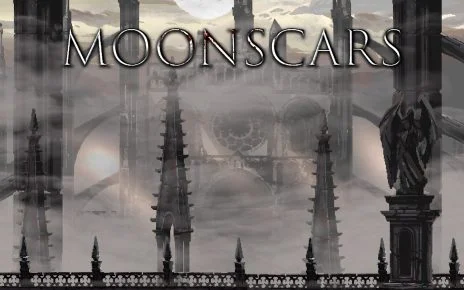If you’d told me even 12 months ago that Metroid would not only be getting a brand new 2D game, but it was a sequel to the 19-year-old Metroid Fusion, I’d have permanently damaged my vocal cords from all the scoffing. To think, Metroid Dread was surprise announced and released within a few months…man, it warms my heart. As a journalist, gamer and fan, it warms my heart to see such a legendary series make its return. It brings an even greater warmth when I can say, without a shadow of a doubt, that Dread is one of the best games in the series – if not the best.
The Story Continues (Finally)
Dread picks up right where Fusion left off. The Metroid’s are gone, the X-Parasite is eradicated and Samus Aran, our half-Human, half-Chozo, half-Metroid (hang on…) Bounty Hunter is off on another adventure with AI companion, Adam, in tow. After landing on planet ZDR, Samus is quickly assailed by a seemingly extinct Chozo warrior who knocks her for six, and leaves her stranded, mostly powerless, and surrounded by deadly enemies.
This is your standard Metroid opening, although the inclusion of a live Chozo is certainly a surprise. The story mostly sticks to the background – literally considering the environmental storytelling – but it does have moments of exposition and general development. Aside from the introduction, there is a big plot dump around the halfway mark and another near the end, and honestly, they were welcome additions. It got a bit cheesy at times, but it ended up being a pretty compelling tale that falls right in line with what you’d expect.
Metroid Dread is a Metroidvania, and being the primary name in an entire genre, it nails the formula its predecessors established and later perfected. ZDR is a humongous, interconnected maze with side paths, gubbins, and all manner of secrets to uncover. The game has an intended path, and sticking to it is incredibly easy thanks to a truly fantastic map system that allows you to easily decipher where you need to go, without ever pointing you towards a specific destination (a faux pas Fusion made).

Freedom
As a result, exploring ZDR and finding your way always felt natural, even if the game has player-driven systems to subtly guide you. Even if you do get lost, there is always something to find. It feels like every room contains a clue to uncovering some new piece of kit, like an Energy Tank or Missile Upgrade. Dread also teases you constantly with areas you can’t access, giving you the incentive to backtrack every time you find a new upgrade.
This was especially prominent with the Morph Ball. Metroid as a series comes with expectations, and one of those is having the ability to roll into a ball and get through small passages. Dread scatters Morph Ball routes throughout the early game, but withholds the ability to traverse them for literally hours. Considering the Morph Ball has been one of the first items you find in every Metroid to date, this is rather jarring – in a good way. It’s subversion done right, and gives some of Samus’s new abilities time to shine. Heck, it’s only an “issue” when you are on your first playthrough anyway.
That’s because, in Dread, you can sequence break. Yes, there is an intended path, but you don’t need to take it. Mastery of the mechanics allows you to go to areas you aren’t meant to get to, and therefore unlock abilities you shouldn’t have. Only, Mercury Stream designed the game this way. They reward you for sequence breaking in ways I won’t spoil, but are genuinely surprising. It gives the illusion that you are discovering ways to break the game, without actually breaking anything.

Like A Dream
This freedom in movement is a testament to the fantastic controls Metroid Dread sports. Samus has never been as slick or as tight as she has been in Dread. She’s devilishly fast, has one hell of a jump, but is always noticeably weighty. This is in stark contrast to something like Super Metroid, where Samus was distinctly clunky and very floaty. She can bound off walls, grab ledges, and slide – all without upgrades. As her upgrades begin to mount, so do her navigational capabilities.
All of this comes together for the combat, which is as punishing as ever. Metroid has never really been an easy series, and enemies have historically hit like a train. In Dread, Samus is so well-tuned, that getting hit is always your fault, and it can always be avoided. Every attack in Dread is dodgeable, provided you have a degree of competence. Quadruple flipping over a laser whilst performing a mid-air counter-attack on a dive-bombing enemy, into an instant-kill charge shot, before landing unloading a salvo of missiles at point-blank range into a giant gribblie is par for the course, and it feels great.
Bosses are the highlight of the combat show, however. These buggers are huge, have multiple phases, and can take you out with surprising efficacy. Death is almost inevitable as you learn their patterns, but once you do, executing the perfect run is like a drug. Samus in cutscenes is this badass, no-nonsense killer, and you embody that when you take out a boss for the first time. By the time the last boss has rolled around, you will be a master of Dread, and you get ample opportunity to prove it.

Let’s Talk About The EMMI
The final ingredient in the Dread sandwich is the EMMI. These blighters are death incarnate. Each zone has an EMMI roaming around large swathes of the map (clearly marked), and fighting them is impossible. If they hear you, they will hunt you. If they see you, they will chase you. If they catch you, you are dead…most of the time. They are the Dread in Metroid 5, and they are a threat right up until the game ends. You are told constantly that they are beyond your abilities, and the game is happy to prove it if you try to tackle them.
These sections are short, but consistently stressful and add a whole new dimension to Metroid Dreads’ game feel. Samus never feels weak during regular play, so you never feel stressed. You know Samus will whoop whatever is in her way. The EMMI flip that notion on its head. There are seven EMMI in total, and you will kill all seven by the game’s end. Each EMMI feels distinct too, due to unique abilities and environmental hazards that get introduced as you progress. Even unlocking the temporary means to kill an EMMI is stress-inducing, and they can absolutely murder you, armaments be damned.
So yeah, Metroid Dread can be a tad on the difficult side at times, and no, there is no Easy mode. You play Dread on standard, and then if you win, you unlock Hard. There is no way to tone down the challenge. That doesn’t mean Dread is punishing, however. The game checkpoints every room or so, so death is, at most, a momentary setback. You fall, get back up, and are instantly back in the action and trying again. No downtime. It also helps that the game feels very fair to boot.

Shiny Bits
Metroid Dread is also one of the best-looking games on the Nintendo Switch, with a beautiful art style that simultaneously looks distinctive, yet familiar. Samus in particular has had a pretty serious redesign from her standard look. Even when compared to her Fusion Suit, there have been a number of interesting tweaks. The stark whites, blues, golds, and purples of her suit stand out nicely when put against the varied landscapes she is exploring, but she never feels out of place. Enemy designs are also top-notch, with a few returning favorites to poke them nostalgia buttons. Cutscenes are universally phenomenal, with excellent direction. They are also seamless, allowing you to go from gameplay, to cutscenes, to gameplay, effortlessly. The game did drop a few frames here and there, unfortunately, but these were most common near the end of the game, and weirdly enough, when there weren’t any enemies on screen. I assume the environmental effects were taxing the Switch a tad.
Metroid as a series is bursting with classic tunes, and Dread not only brings a bunch of them back with a sparkly coat of audio paint but, like with enemies, has a bunch of new tracks that all sound fantastic. The music is very much in the background, but when it kicks into gear, it really kicks in. Everything from the title screen to the end credits is distinctly Metroid and had me feeling things I didn’t know I could. What little voice acting there is, is great. Adam sounds suitably robotic, Samus has maybe two lines, and they are delivered well, and other characters sound great regardless of what made-up language they are speaking. This is clearly “Triple-A” stuff, and Nintendo wasn’t pulling any punches.

Verdict
Metroid Dread is one of the finest games to release this year. It not only encapsulates everything that makes Metroid, Metroid, but it does so in a way that feels new and fresh. Dread stands on its own two feet and demands to be played. The genre has been missing its namesake for far too long now, so I am happy to say that Dread is a worthy crown-bearer. I hope to see more from Samus, Nintendo, and Mercury Stream in the future.
METROID DREAD IS A MUST BUY

Purchase: Nintendo Store
If you enjoy Metroidvanias, then perhaps you’d like our review for Blaster Master Zero 3.
Many thanks go to Nintendo for a Nintendo Switch review code for this title.

Forged in the rainy wilds of northern England, I carved a path of mediocrity through generations and genres. My play style is often described as: “optimistically awful”.




